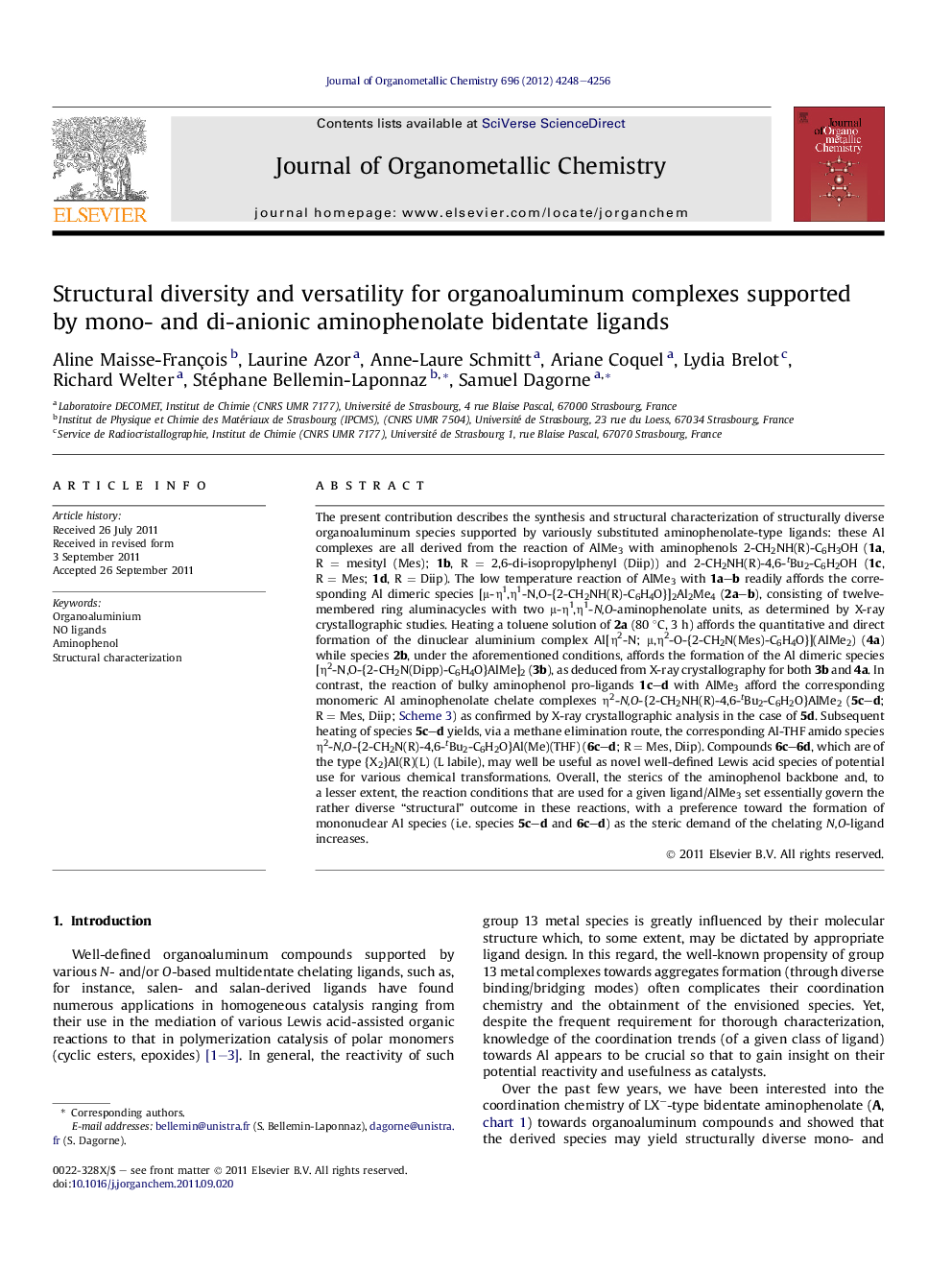| Article ID | Journal | Published Year | Pages | File Type |
|---|---|---|---|---|
| 1326498 | Journal of Organometallic Chemistry | 2012 | 9 Pages |
The present contribution describes the synthesis and structural characterization of structurally diverse organoaluminum species supported by variously substituted aminophenolate-type ligands: these Al complexes are all derived from the reaction of AlMe3 with aminophenols 2-CH2NH(R)-C6H3OH (1a, R = mesityl (Mes); 1b, R = 2,6-di-isopropylphenyl (Diip)) and 2-CH2NH(R)-4,6-tBu2-C6H2OH (1c, R = Mes; 1d, R = Diip). The low temperature reaction of AlMe3 with 1a–b readily affords the corresponding Al dimeric species [μ-η1,η1-N,O-{2-CH2NH(R)-C6H4O}]2Al2Me4 (2a–b), consisting of twelve-membered ring aluminacycles with two μ-η1,η1-N,O-aminophenolate units, as determined by X-ray crystallographic studies. Heating a toluene solution of 2a (80 °C, 3 h) affords the quantitative and direct formation of the dinuclear aluminium complex Al[η2-N; μ,η2-O-{2-CH2N(Mes)-C6H4O}](AlMe2) (4a) while species 2b, under the aforementioned conditions, affords the formation of the Al dimeric species [η2-N,O-{2-CH2N(Dipp)-C6H4O}AlMe]2 (3b), as deduced from X-ray crystallography for both 3b and 4a. In contrast, the reaction of bulky aminophenol pro-ligands 1c–d with AlMe3 afford the corresponding monomeric Al aminophenolate chelate complexes η2-N,O-{2-CH2NH(R)-4,6-tBu2-C6H2O}AlMe2 (5c–d; R = Mes, Diip; Scheme 3) as confirmed by X-ray crystallographic analysis in the case of 5d. Subsequent heating of species 5c–d yields, via a methane elimination route, the corresponding Al-THF amido species η2-N,O-{2-CH2N(R)-4,6-tBu2-C6H2O}Al(Me)(THF) (6c–d; R = Mes, Diip). Compounds 6c–6d, which are of the type {X2}Al(R)(L) (L labile), may well be useful as novel well-defined Lewis acid species of potential use for various chemical transformations. Overall, the sterics of the aminophenol backbone and, to a lesser extent, the reaction conditions that are used for a given ligand/AlMe3 set essentially govern the rather diverse “structural” outcome in these reactions, with a preference toward the formation of mononuclear Al species (i.e. species 5c–d and 6c–d) as the steric demand of the chelating N,O-ligand increases.
Graphical abstractThe coordination chemistry of bidentate aminophenolate ligands towards organoalumium has been thoroughly studied. Such bidentate ligands may adopt various binding modes upon coordination to Al, resulting in a rich structural chemistry for the derived aminophenolate organoaluminum complexes.Figure optionsDownload full-size imageDownload as PowerPoint slideHighlights► Four different bonding modes may be adopted by various bidentate NO-aminophenolate ligands coordination to Al. ► The sterics of the aminophenol backbone essentially govern the structures of the Al derivatives. ► Preference toward the formation of mononuclear Al species as the steric demand of the chelating N,O-ligand increases.
